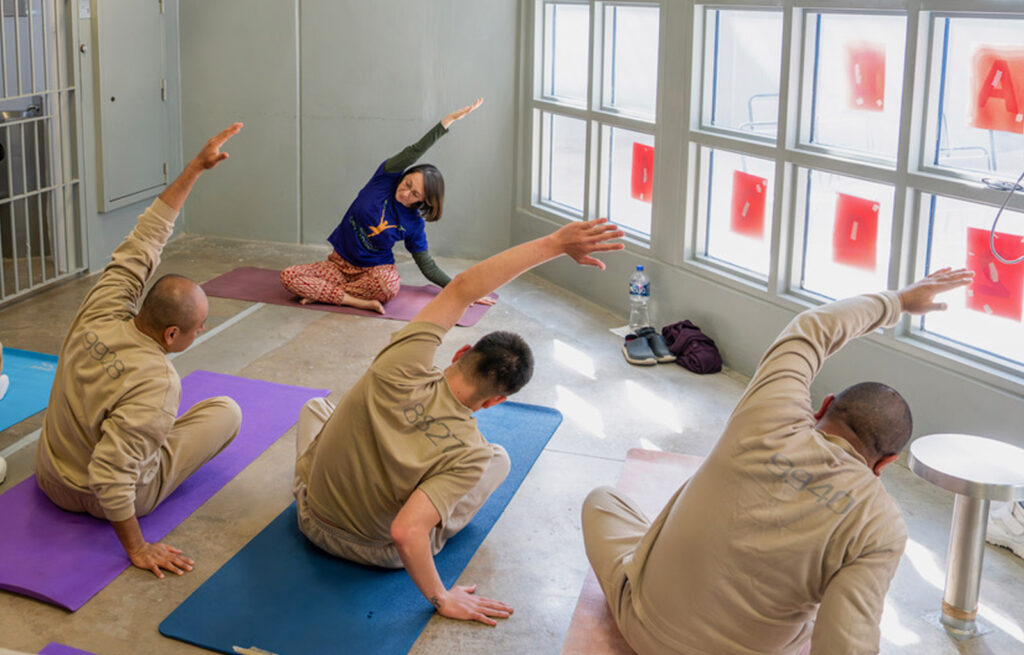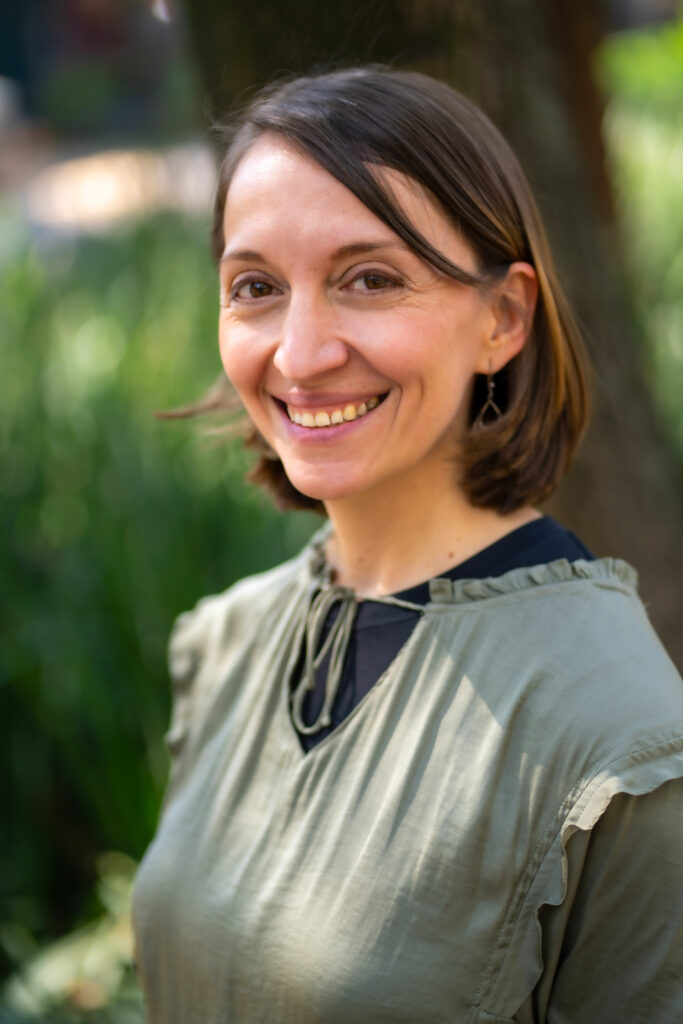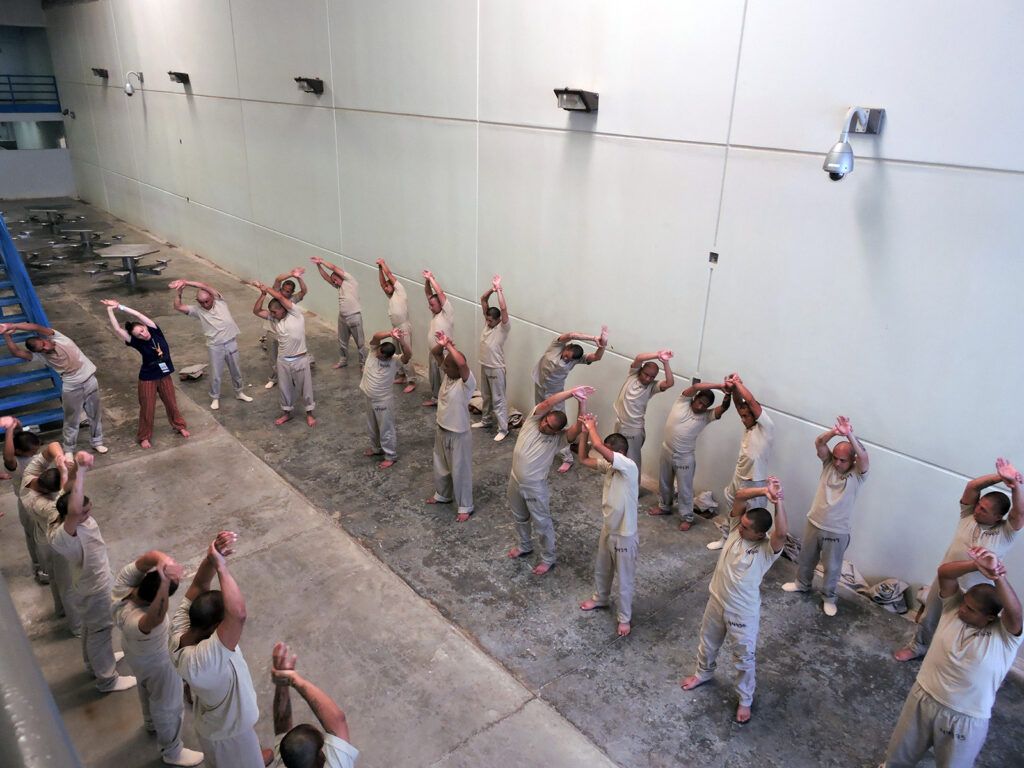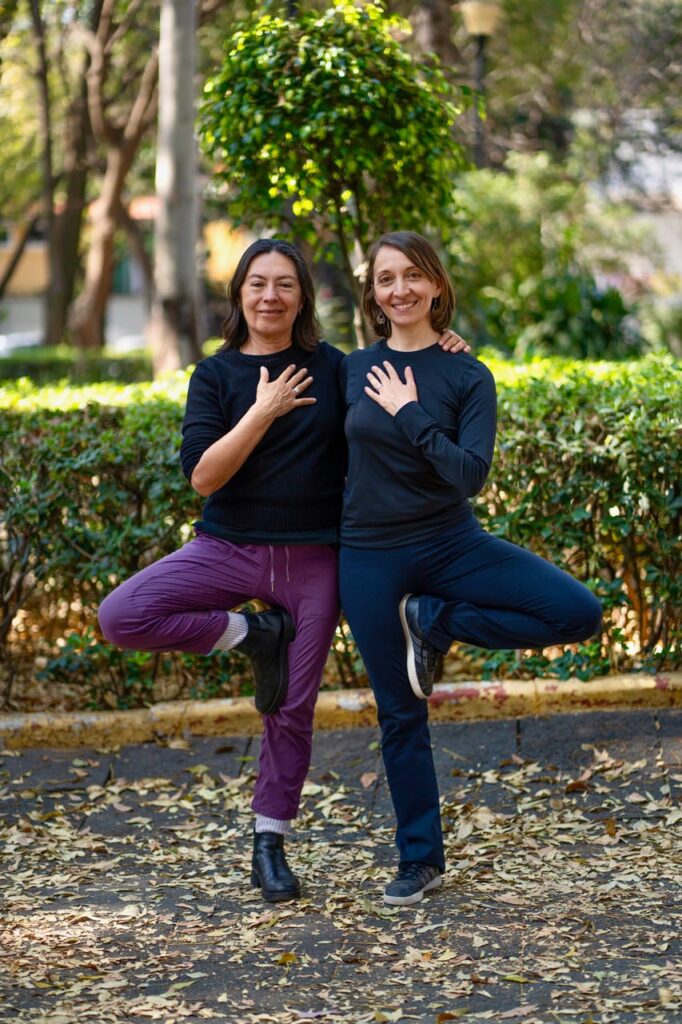Healing the Body, Healing the Heart: Lessons from Yoga and Restorative Circles in Mexican Prisons

Prison Yoga Project is deeply grateful for the leadership and vision of Luisa Pérez, who has guided PYP–Mexico for the past eight years. As she steps down from her role, Luisa shares—in her own words—the journey, challenges, and profound impact of bringing yoga behind bars in Mexico.

I write this article in the final month of my eight years of service with Prison Yoga Project. It has taken me longer than I imagined to put my thoughts in order—but even more so, my feelings. This work has been woven into my daily life for so long that sometimes I feel it will continue on its own, even if I am no longer directing the chapter here in Mexico.
Over these eight years, I have witnessed again and again that the body truly keeps the score—but I have also discovered that every story matters, and that healing in community is possible.
Prison Yoga Project gave me the space to uncover something I had never encountered in my previous life as a human rights lawyer: that harm can be healed, and that healing must pass through the body. Justice and dignity became tangible, not abstract. I have seen countless moments of healing—sometimes after a 60-minute trauma-informed yoga practice, other times when someone spoke their truth with courage and vulnerability, and was received with respect during a Restorative Circle inside a maximum-security prison.
I discovered that restorative justice and body-based interventions can—and must—coexist if we are to rebuild lives after experiencing or causing violence. Opening the Mexican chapter of PYP in 2017 allowed me to weave together my two deepest passions in one place: trauma-informed yoga and restorative practices. I am convinced these tools can interrupt cycles of harm and plant seeds of peace in places often forgotten when it comes to preventing violence.

The lessons I carry with me are many, but one stands out above all: transformation—reconnecting with our true selves—is always possible. Personal decision is necessary, yes, but the support of healthy social networks is essential. In prisons, I have sat with people who had lost nearly everything, and yet, through the rhythm of breath and movement, they discovered a way to begin again. Their resilience has taught me that transformation can happen even in the most constrained spaces, inside a criminal system that traumatizes and condemns not only the accused, but also their families, their communities, and even the victims of crime.
Inside this environment, I have met extraordinary teachers—men and women who gave me another vital lesson: each of us is more than the worst thing we have ever done. I have seen men who once used weapons daily to harm people now dedicate themselves to practicing yoga and mindfulness every day. Others, who were once leaders of organized crime cartels, found the courage to step away from violence through our Restorative Circles, some going on to complete high school or even pursue law degrees while still serving their sentences.

As I close this chapter of leadership, I do so with profound gratitude. Gratitude for the men and women who trusted me enough to share their stories, allowing me to witness their agency in rebuilding new lives. Deep gratitude to my mentor, Jñana Dakini, who once again showed the true heart of yoga—deeply engaged with social justice—and supported me in opening the Mexican Chapter of PYP. Gratitude for the facilitators and colleagues who believed that yoga belongs to everyone—even, and especially, to those society often forgets—and who had the humility to engage in difficult conversations about privilege, always working to place it in service of others. And gratitude for the chance to witness what happens when compassion, accountability, and embodiment meet. Every prison visit, in person or online, confirmed for me that within every person lies a capacity for healing, connection, and hope.
I remain amazed by the small and big achievements of these years—some the fruit of consistent work and determination, others the grace of life placing the right people at the right moment. Together, we published a Yoga Manual issued by the United Nations in the federal Senate in 2019, gained Yoga Alliance support during 2023-2025 to demonstrate our impact with strong data that explains why yoga works inside federal prisons, and wrote a trauma-sensitive yoga manual for women in 2024. I still cannot believe we are the only Mexican organization running restorative programs inside prisons—every week, without interruption (except during COVID)—since 2018.
Looking ahead, I feel great enthusiasm for what is to come. One of the men who practiced yoga in the first federal prison we visited in 2017 and sat in our very first Restorative Circle in 2018 is now free. He has designed a new program to support “his brothers” still inside. In our conversations, I have learned so much that I know it is time to give space for other voices to create, expand, and keep evolving—as we must, as a living organization. I am certain that under Ana Pereyra’s leadership as the new Director of PYP–Mexico, our impact and our tools will continue to grow and offer new paths for healing inside and beyond Mexican prisons.


Responses